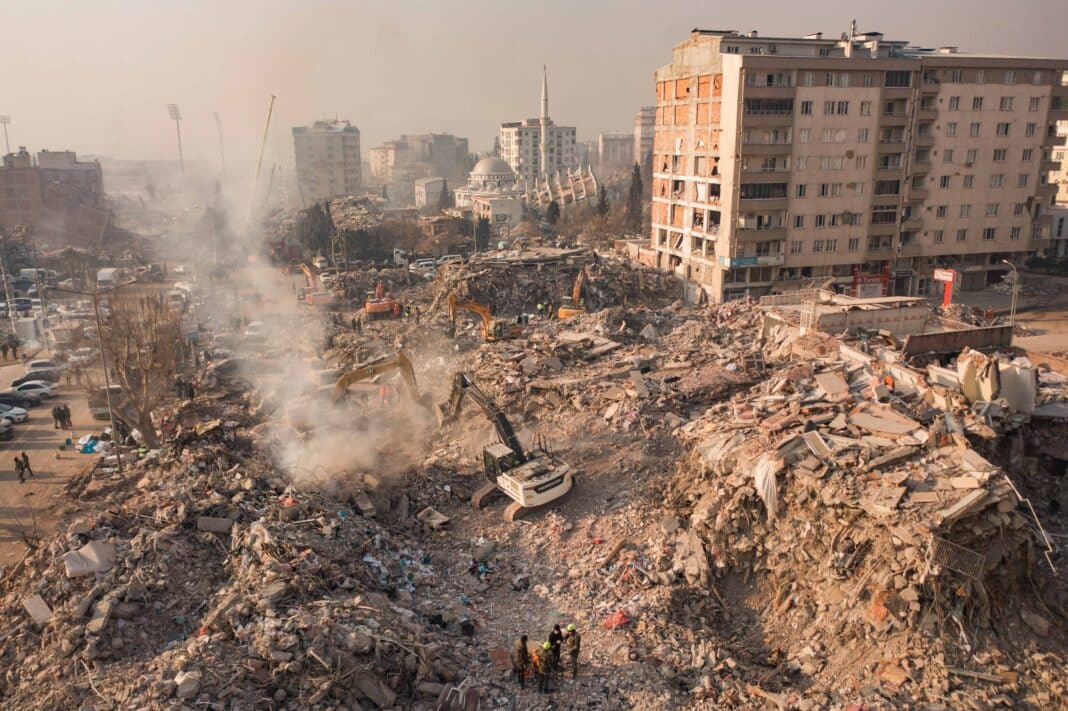Timber-based construction systems are critical to earthquake-resilient buildings; their flexibility and weight allowing them to balance stiffness and lightness to “ride out major seismic activity” and “bend before it breaks.”
That is according to Christiano Loss, Assistant Professor of Wood Engineering at the University of British Columbia, who spoke to Arch Daily overnight about the resilience of timber against earthquakes.
It comes just days after a 7.4-magnitude earthquake hit Taiwan—the largest on the island in 25 years. Changes to the building codes are now being applauded for preventing much more widespread damage.
“Taiwan’s earthquake preparedness is among the most advanced in the world. The island has implemented strict building codes, a world-class seismological network, and widespread public education campaigns on earthquake safety,” according to Stephen Gao, a seismologist and professor at Missouri University of Science and Technology.
Before adding that, like Japan, which was rocked by a 7.5 earthquake in January, the damage was much lower than that of equivalent shakes in Turkey, Syria, and Morocco.
According to Professor Loss, “One thing that makes wood stronger (than other materials) is it’s lightweight. You might think this is a downside, but it’s a big advantage.” He adds that “wood is five times lighter than concrete, considerably reducing the seismic forces in the building.”
A building that is too rigid becomes fragile, as its structure eventually breaks with the vibrations. In contrast, a lighter, less rigid building can cause occupants to shake more and create large movements that damage building components.
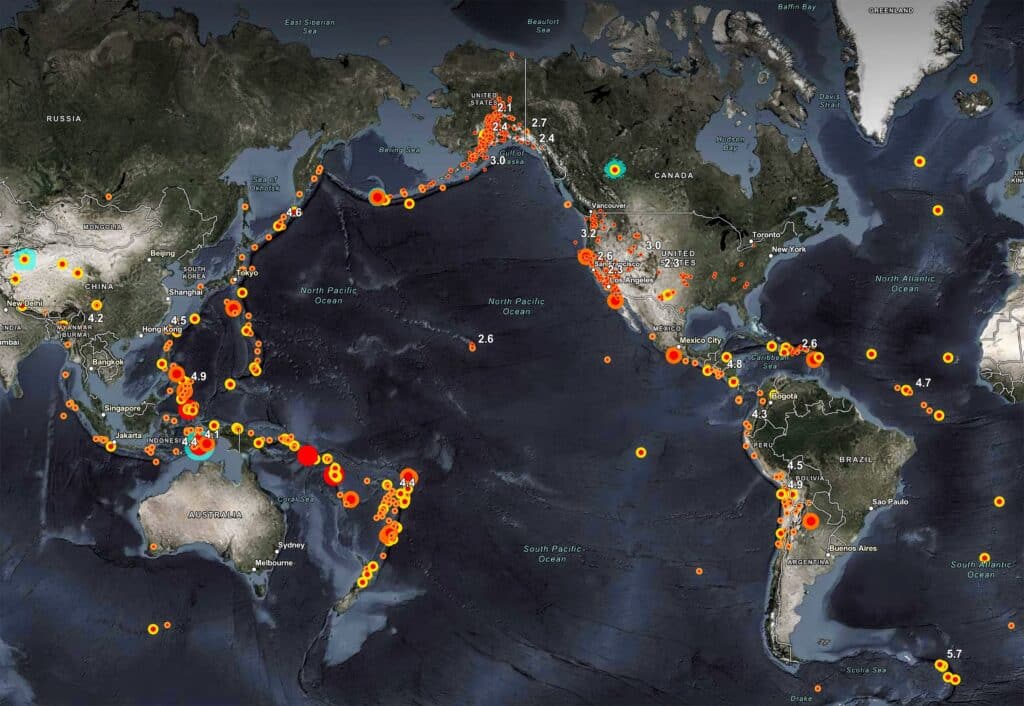
Armed with real data, scientists are now confident that buildings made from mass timber with metal connectors will bend more, but remain in place without structural collapse.
“The fact that you don’t have any rebar incorporated into the material or system can detect damage quite easily. As long as you have the connection well defined in the system, timely repair is possible,” Professor Loss said, adding that timber is an ideal construction material for post-disaster faculties – including power centres, supporting infrastructure and hydropower operational centres.
Last week, several timber delegates from Asia’s “Ring of Fire” – a horseshoe-shaped zone around the Pacific Ocean where most earthquakes occur – visited Strong-Tie’s R&D lab in Stockton, California, as part of a six-day tour of the US hosted by the APA – Engineered Wood Association which also included a trip to the International Mass Timber Conference in Portland.

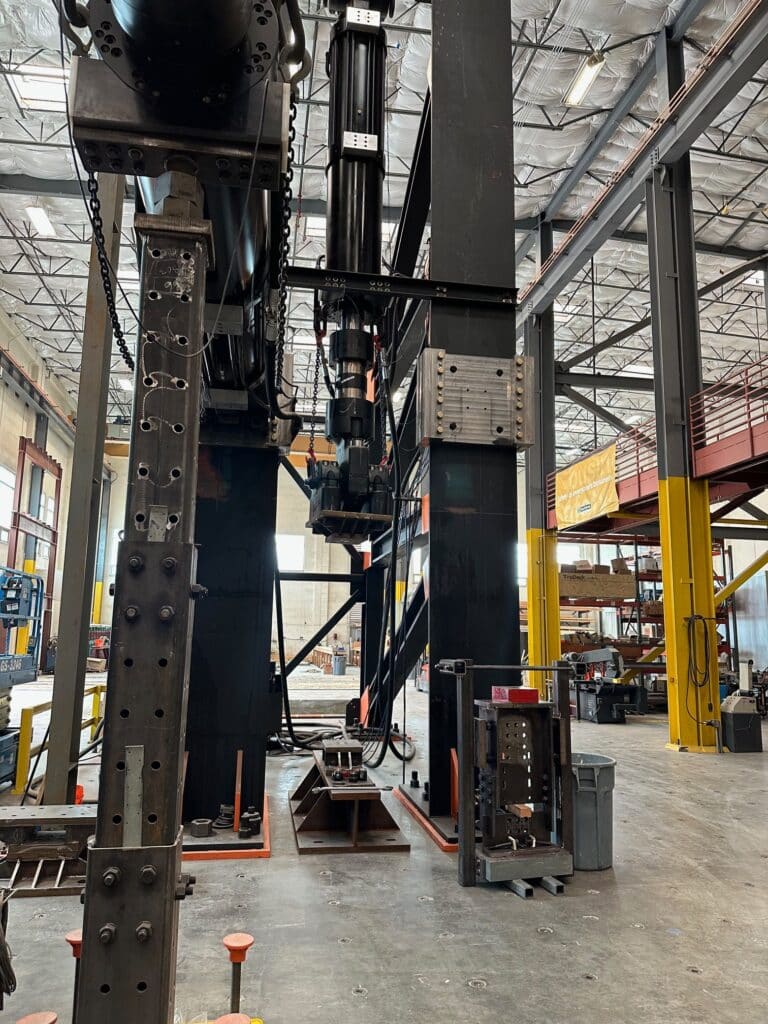

Strong-Tie is the world’s largest supplier of metal connectors used in timber buildings, with the delegation, including nine representatives from Taiwan, visiting its purpose-built “Shake Table”, where it tests building portions (including walls, ceilings and floors) under earthquake conditions.
“Remarkably, Strong-Tie uses ground motion recordings from real-life seismic events, with the shake table testing specimens with an inertial weight of up to 60,000 lbs,” according to Australian-based Andrew Dunn, who spoke exclusively to Wood Central, adding that Strong-Tie “using some of the largest ground motions recorded to date.”
As part of the TallWood research project, Strong-Tie R&D was instrumental in testing a 10-storey cross-laminated timber building 100 times as part of the world’s most extensive seismic test.
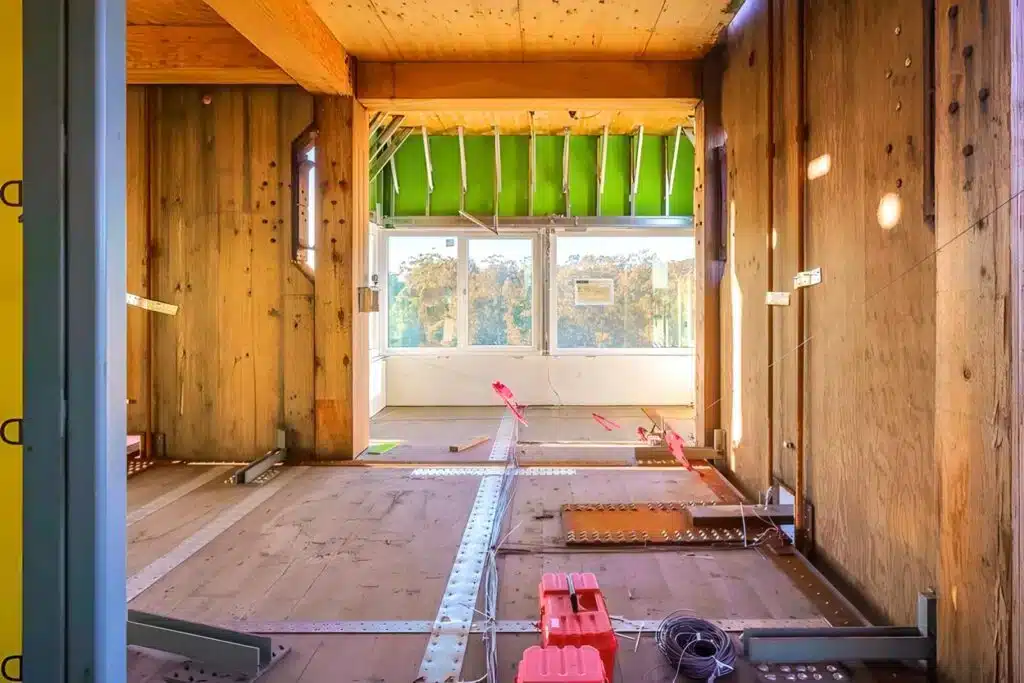
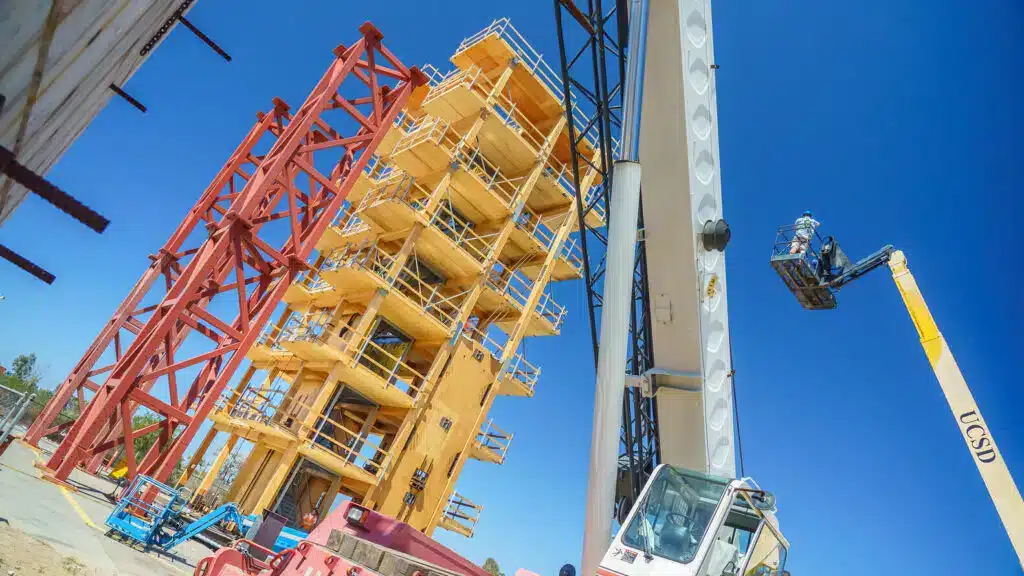
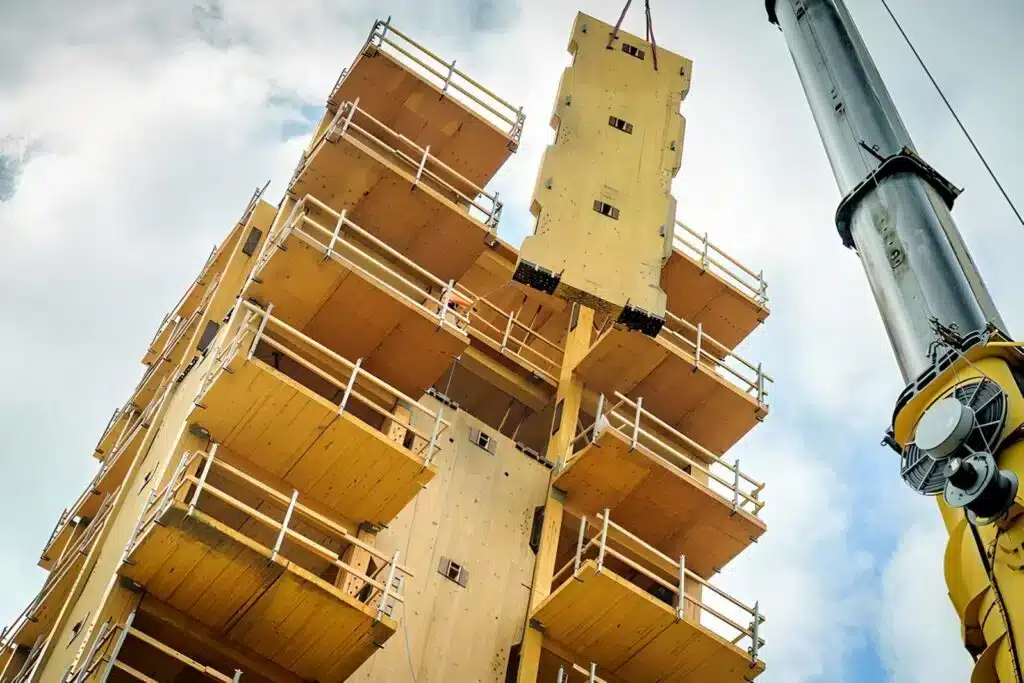
The result was a new type of rocking wall system, which, according to lead researcher Professor Shiling Pei, could soon be added to building codes in the United States, Japan, Taiwan and globally via the International Building Code.
The rocking walls are self-centred to prevent significant damage during a quake. “Each 3-metre-wide panel spans the tower’s height and is anchored to the world’s largest outdoor shake table via Strrong-Tie’s steel rods,” Professor Pei said, adding that “rods control the motion of the walls, allow them to lift on one edge and compress on the other.”
“When the shaking stops, the rods bring the wall’s edge back to being flush with the shake table — equivalent to the foundation. Thus, the building returns to its original vertical position.”
The 40,000-kilometre “Ring of Fire” arc stretches from New Zealand – the home to Scion’s Quake Proof Diagrid Timber System, to Japan, and off the west coast of mainland Asia and down the Americas. About 81% of the world’s largest earthquakes, 80% of tsunamis and 75% of all active volcanoes exist there.
In recent years, Taiwan authorities have launched campaigns to make older buildings more earthquake-resistant.
Following one tremor in 2018, the government announced a review of more than 34,000 buildings, with asset managers forced to upgrade buildings to make them safe.
In 2022, the Interior Ministry outlined changes to building codes, including reinforcements for buildings susceptible to earthquakes.




